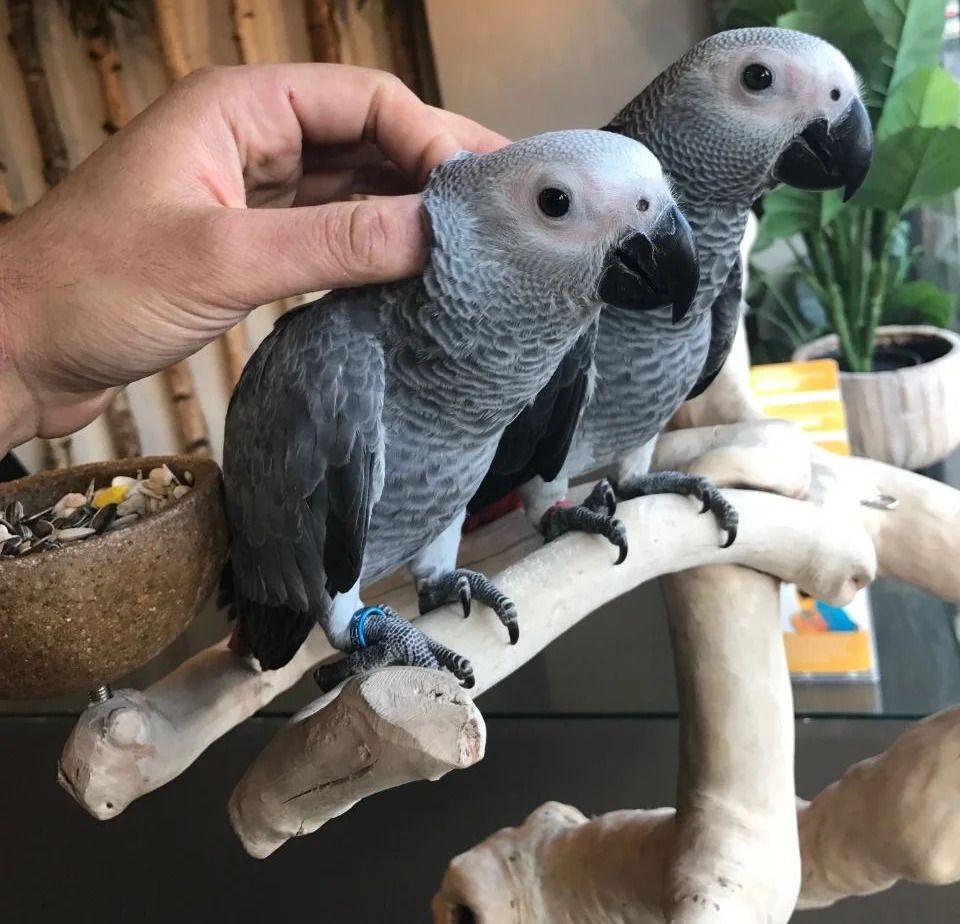
Charming African Grey Parrot For Sale
Add a review FollowOverview
-
Sectors Human Resources
-
Posted Jobs 0
-
Viewed 42
testing
Company Description
Timneh African Grey Parrot Tools To Improve Your Daily Life Timneh African Grey Parrot Trick That Everybody Should Be Able To
How to Keep Your Timneh Happy and Inquisitive
African Greys are renowned for their ability to imitate sounds, like the sound of microwaves or the ringing sound of a telephone. They also speak in a wide range of languages and mimic human voices to the point where they can recognize the person they’re talking about.
 Breeding
Breeding
The African grey parrot is one of the most intelligent birds, and also one of the most vocal. They can be trained to master tricks and other skills as well. They are social birds with distinctive personality. They also possess strong emotional and empathic responses. This is why these birds are able to form strong bonds with an individual and become demanding of their attention. They can be destructive and may bite, pluck or even inflict self-mutilation.
African greys have a strong bond with each other in the wild, and this bonding often extends to the captive environment. They tolerate other members of the family but frequently become bonded to one member. Despite this, these aren’t very cuddly birds. They are prone to feather plucking, and could cause injury or bites to members of their family who do not spend enough time with them.
They require a large cage, and it should be placed somewhere draft-free and well-lit. A large playpen can be a good choice, as it lets the bird spread its wings as it is needed. The cage should have toys like parrot swings and chains, bells, ropes for climbing, and destructible toys. The timneh African grey can be taught to use these toys in order to exercise and improve its mental capabilities.
These birds are very talkative and can detect sounds and words very quickly. They can imitate human voices and, in some instances, identify the person they’re speaking to. They are also known to “blow up” on cheating spouses by repeatedly calling their names and mimicking their spouse’s voice.
In their natural environment, these birds forage on the treetops in search of fruits, seeds, nuts and vegetables. Their diet in captivity should contain an assortment of high-quality parrot pellets, sprouts, grains, vegetables, nuts and commercially prepared parrot food. Seeds should not constitute any significant proportion of the diet, since they are high in fat and do not contain many of the minerals and vitamins needed for a healthy parrot.
You can also learn how to care for yourself.
African grey parrots have an inherent curiosity and are intelligent. To flourish, they require stimulation of their minds and enrichment of their environment. They also require veterinary treatment. They are often stressed by changes in routine, new people or foods, and may exhibit behaviors such as self-mutilation or feather plucking. It is crucial to determine the underlying causes of these behaviors to tackle them effectively.
While both Congo and Timneh african grey parrots can speak, the former usually begins talking sooner than the latter at around 6 months. The gender of the bird does not seem to play a role in the capacity of either species to talk, but it is essential that the process should begin at a young age. Both African greys are adept at mimicking everyday sounds like knocks on doors and the phantom phone ring.
The cage that these parrots are placed in must be large enough to provide ample movement and wing extension and is constructed of durable materials that can stand up to chewing. It should have perches of varying thicknesses to support feet, and be equipped with toys that allow them to play with, chew, preen, and destroy. Toys that stimulate them to use their brains are beneficial, and should be rotated regularly. This will keep the bird mentally and physically active, preventing boredom that could lead to behavioural problems.
A wide range of food items is essential to ensure a healthy diet for the Timneh African grey, including seeds sprouts, fruits, vegetables, nuts and commercial pellets. To combat the problem of calcium deficiency the birds can be provided with cuttlefish or a calcium block. It is also possible to provide them with leafy greens that are rich in vitamins and minerals.
Timneh African grays require in constant contact with their human companions. If not given the proper attention, these birds can become withdrawn and uninterested in their surroundings, leading to unhealthy behavior such as screaming or biting, and even feather plucking. The issue of jealousy can also be an issue which is why it is essential that these birds are socialized from a young age.
Feeding
African greys are among the most regular-minded and observant species of parrots. Any slight change in their environment can cause them to react negatively. This is why it’s essential to spend time desensitizing them to new items and situations so that they can take pleasure in the excitement of new things without unnecessary stress. They are emotional and empathetic creatures with distinct personalities and are demanding of their owners’ attention.
Like their cousins the Congo African Greys, Timneh African grey parrots can be exceptional mimickers and talkers. They can master huge vocabulary and imitate sounds from the home with astonishing accuracy, such as the ringing of a phone or the sound of a microwave. They are also excellent at imitating human voices, and can be so precise that they can be recognized.
This species is found in a range of habitats, ranging from dense forests to open Savannahs. The climate is usually warm and sunny but cool in winter. They can live up to 40-50 years in captivity.
Both the Congo and the Timneh african grey parrot are very social birds that require a lot of interaction with their owners. If they become unhappy or unwell, they’ll quickly vent their frustration through screeching. They can also develop behavioural issues such as feather plucking or self-mutilation for a number of physical and psychological reasons. To prevent these from happening problems, it is important to provide them plenty of stimulation for their minds with puzzle toys and chew toys.
They love to play and so a big cage that lets them roam around will give them the space they need. The cage should be set in a quiet spot of the home, away from drafts and noisy areas. Keep the cage away from windows and air conditioning vents, as these can cause the cage to overheat.
It is essential to have fresh, clean water available at all times. Food and water dishes need to be cleaned daily. A healthy diet should consist of seeds, fruits vegetables, commercial pellets and nuts. They should be fed at least two times a day, and be given plenty of healthy food in between.
Health
African Greys are the most intelligent parrots. They are known for their ability to imitate human speech and communicate a variety of things you may think they haven’t learned. They are great companions but must be stimulated by numerous activities. The boredom of a pet can lead to feather plucking, or other undesirable behavior. To keep your Timneh entertained, provide them with a variety of non-destructible toys that are safe for birds.
These birds have the same brain as a 2-year-old, and like to be challenged like you. Boredom can lead to these birds biting, screaming, or plucking their own feathers. It is essential to make sure they have plenty of toys that are not destructible to play with and also to allow them to explore the surroundings of their cage.
It is essential to keep an eye on your African Grey for signs of stress. It could be as easy as changing their diet, or moving furniture around, or more serious issues like seizures or weight loss. It is also crucial to observe changes in their behavior, like being more aggressive or refusing to engage in interactions with other people. Watching for these signs will aid in identifying any possible health issues early and provide them with the treatment they need.
These parrots are susceptible to calcium deficiencies, so it is crucial to check their levels at every annual vet visit. It is also beneficial to add more leafy greens to their diet. This includes kale, mustard greens, Swiss chard and spinach. This will help to ensure their nutrition needs are met and ensure that they remain healthy. They also require fresh, clean water every day. It is recommended to keep them at different locations and to wash the dishes for food and water every day.


